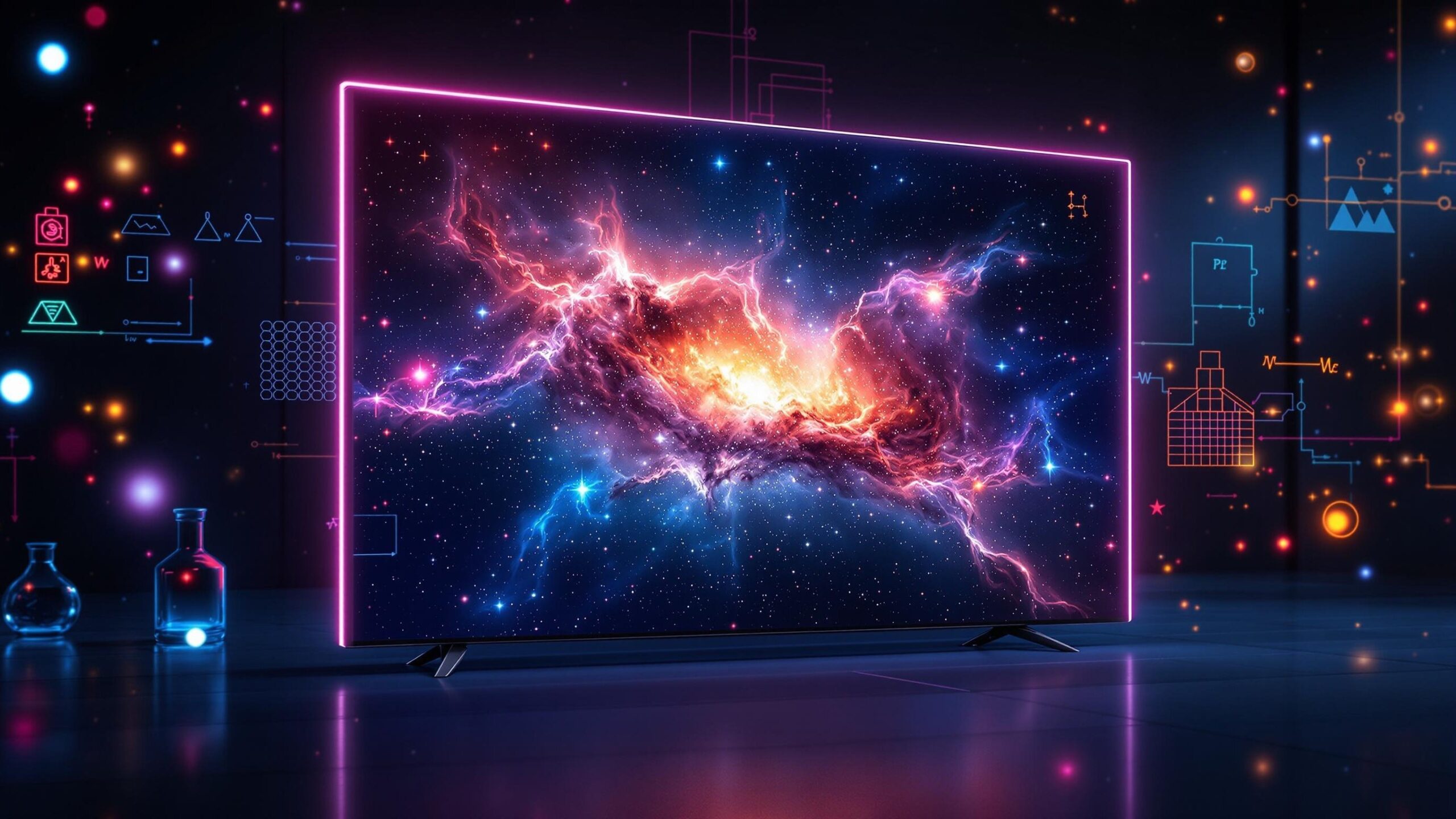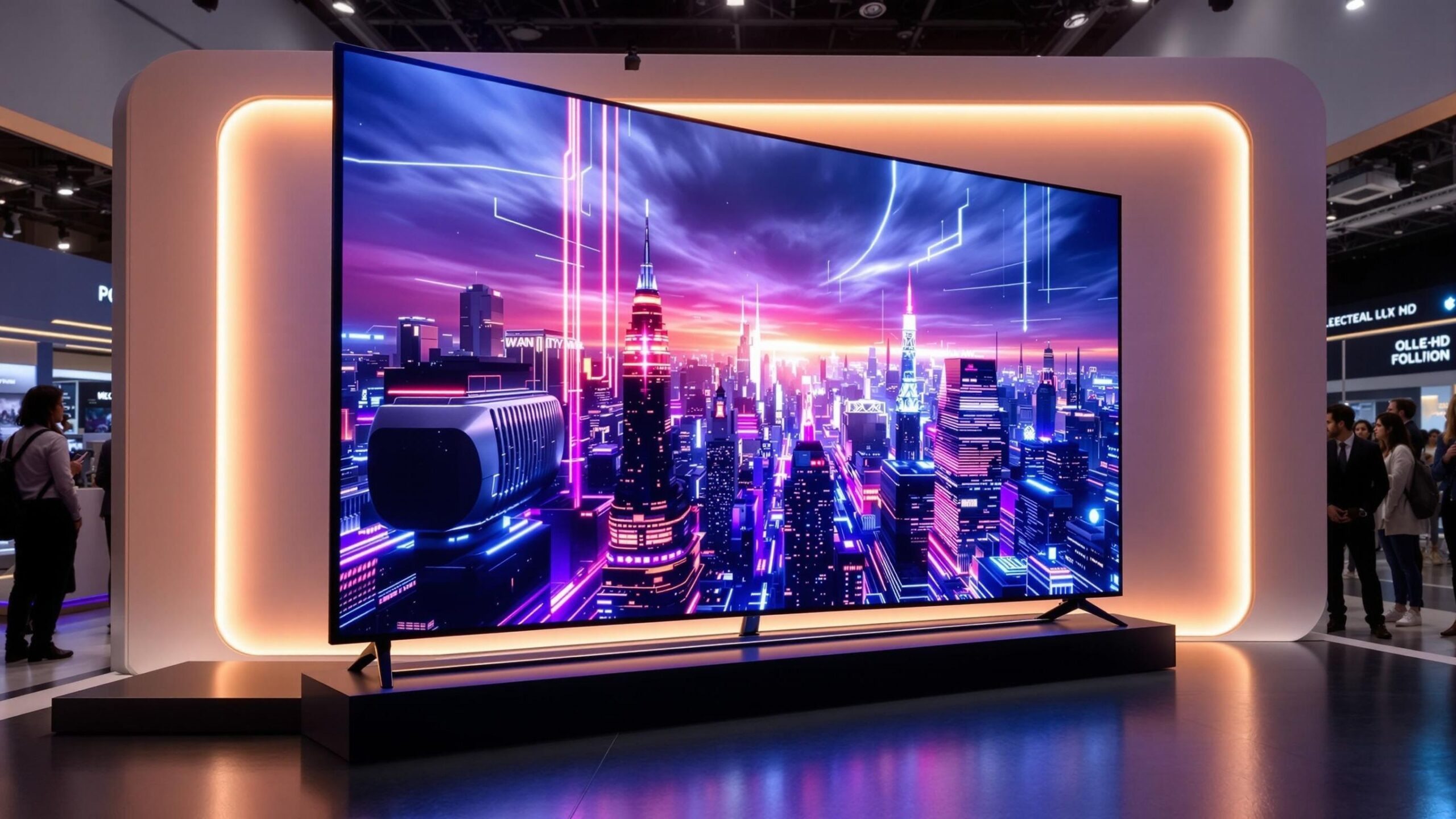How OLED TVs Achieve Perfect Blacks and Infinite Contrast: The Science Explained Simply
One of the most striking claims made about OLED TVs is their ability to produce perfect blacks and infinite contrast. This isn’t just marketing hyperbole—it’s a real, scientifically-grounded phenomenon that sets OLED apart from all other display technologies. But how do these televisions manage to achieve such visual brilliance? The answer lies in a powerful blend of physics, chemistry, and precise engineering. In this article, we’ll break down how OLED TVs create perfect blacks and deliver unmatched contrast—explaining the science in technically accurate yet easy-to-understand language.
What Does “Perfect Black” and “Infinite Contrast” Actually Mean?
Before diving into the science of OLED, it’s important to understand what these terms mean. In TV technology, “black” refers to the absence of light being emitted from a pixel. The darker the black, the more realistic the picture looks—especially in scenes with shadow, nighttime, or high drama. “Contrast” is the ratio between the brightest white and the darkest black a screen can display. A high contrast ratio makes the image appear more dynamic, three-dimensional, and natural to the human eye. Infinite contrast doesn’t mean the brightness is limitless. It means that when a pixel can be completely turned off (zero light output), the denominator in the contrast ratio equation becomes zero. Since you can’t divide by zero in math, the contrast ratio is described as infinite. In practical terms, it means OLED can show the deepest darks and the brightest lights on the same screen simultaneously with no bleed or haze between them.
The Key Difference: Backlighting vs. Self-Lighting
To appreciate why OLED is unique, it helps to compare it with the dominant alternative: LED/LCD technology. Most televisions today use LED backlighting. In these displays, a white or blue light shines from the back of the screen, and liquid crystal cells open and close to let varying amounts of that light through. Color filters are added to turn the white light into red, green, and blue pixels. The challenge with this approach is that the liquid crystals can’t block 100% of the backlight. Even when a pixel is supposed to be black, a small amount of light leaks through, making the image appear dark gray instead. Manufacturers try to fix this with “local dimming”—turning off sections of the backlight—but it’s never pixel-precise. That’s why black areas on LED TVs often appear washed out, especially in high-contrast scenes.
OLED, on the other hand, doesn’t use a backlight at all. Each pixel in an OLED screen is a tiny light source that can be turned on or off individually. When a pixel is black, it emits no light whatsoever. That’s what allows OLED TVs to achieve perfect black levels—because the pixels literally stop glowing.
The Science of Self-Emissive Pixels
So how do OLED pixels create their own light? It all comes down to electroluminescence. OLED stands for “Organic Light-Emitting Diode.” The word “organic” here refers to the carbon-based compounds used in the light-producing layer of the panel. “Diode” refers to a device that allows electricity to flow in only one direction. An OLED pixel is made up of several microscopic layers of materials, including:
A cathode, which injects electrons (negative charges)
An anode, which injects holes (positive charges)
An emissive organic layer, where light is produced
Transport layers that help move the electrons and holes into place
When electricity flows through a pixel, electrons and holes move toward each other and meet in the emissive layer. When they combine, they form something called an exciton—a high-energy state. As the exciton releases energy and drops to a lower energy level, it emits a photon of light. The color of the light depends on the chemical makeup of the organic material. Each pixel contains red, green, and blue subpixels. By adjusting the brightness of each subpixel, the display can produce any color in the visible spectrum. More importantly for contrast, each of these subpixels can also turn off completely—meaning total darkness at the pixel level.
Why Other Technologies Can’t Replicate OLED’s Black Levels
Quantum Dot LED TVs (QLED), Mini LED, and traditional LCDs all rely on a light source behind the pixel layer. These technologies try to improve black levels using techniques like full-array local dimming and dynamic contrast enhancement. While these can make a noticeable improvement, they still fall short because the light source is shared across multiple pixels or regions. Even the most advanced Mini LED TVs have dimming zones in the hundreds or thousands. That means when one area of the screen needs to go black, the TV tries to dim the backlight in that zone—but it can’t fully isolate every individual pixel. The result is “blooming,” where bright objects on dark backgrounds create a halo or glow effect. This softens the image and ruins the contrast in high-precision scenes.
OLED doesn’t need to dim anything. It simply doesn’t activate the pixel if no light is needed. There is no blooming, no halo, and no haze. The transition from bright to black can be instantaneous and surgically precise.
Contrast in Motion: OLED’s Instant Response Time
Contrast isn’t just a static image feature—it matters in motion, too. When a scene cuts from a bright explosion to a dark cave, or when a bright object flies across a dark background, the display needs to react fast. OLED’s self-emissive pixels have an almost instantaneous response time—often measured in microseconds (millionths of a second). This speed ensures that contrast remains sharp during fast-moving scenes. There’s no lag or blur when the display shifts from one light level to another. This is especially valuable in gaming, sports, and action films where precision and clarity matter most. In contrast, LCD-based displays have a slower pixel response time. Even with fast refresh rates, the actual pixels take longer to change their light output, which leads to motion blur and a softer image. OLED’s ability to maintain contrast while things are moving is a huge reason for its visual superiority.
Precision Engineering: The Thin-Film Transistor (TFT) Matrix
Each OLED pixel needs a small electric current to operate, and controlling millions of these pixels simultaneously requires advanced electronics. That’s where the thin-film transistor (TFT) backplane comes in. These tiny transistors act like individual switches, turning each pixel on or off and adjusting its brightness based on the video signal. The TFT layer is essentially a control grid that tells each pixel what to do, thousands of times per second. Most OLED TVs use oxide TFTs or low-temperature polysilicon (LTPS) TFTs, which offer fast response, high precision, and stability. This precision engineering is what allows OLED to not only deliver perfect blacks but also maintain them reliably across millions of pixels for every frame. The control system is as important as the pixels themselves—it’s the brain behind the beauty.
The Role of Color Filters vs. True RGB Emission
Some OLED displays use a technique called RGB OLED, where each pixel contains red, green, and blue light-emitting materials. These can create color directly without the need for filters, resulting in high efficiency and vivid saturation. However, manufacturing these panels at large sizes is challenging. Most OLED TVs, especially those made by LG Display, use a different approach called WOLED (White OLED). In this method, each pixel emits white light, which then passes through red, green, and blue color filters. While this may seem like a step back, it’s actually a highly optimized system. WOLED panels still allow for pixel-level black control and contrast, while simplifying the manufacturing process and improving panel longevity. The brightness, color accuracy, and contrast remain exceptional, and the ability to turn off pixels individually is fully preserved.
OLED and High Dynamic Range (HDR): A Natural Partnership
HDR content takes full advantage of OLED’s ability to deliver precise brightness levels and dark details. Formats like Dolby Vision and HDR10+ use dynamic metadata to instruct the TV how to display each scene’s light and color levels as intended by the filmmaker. Because OLED can produce both extremely bright highlights and perfectly dark shadows at the same time, it can show the full range of HDR without compromise. An OLED TV can show the glint of light off a blade in a dark room, or the shimmer of firelight in a night scene, with pinpoint detail and full control.
This balance is incredibly hard for backlit TVs to achieve. If they boost brightness to show highlights, they risk losing detail in the shadows. If they dim to improve black levels, they mute the highlights. OLED avoids this tradeoff entirely—every pixel gets its own instruction and obeys without interference.
Challenges in OLED: Efficiency and Blue Pixel Lifespan
OLED isn’t perfect. One of the technical hurdles engineers face is pixel aging—especially the blue subpixels. Blue OLED emitters are less efficient and degrade faster than red or green ones. Over time, this can lead to color shifts or reduced brightness. To combat this, manufacturers over-engineer the blue pixels—making them larger or driving them with less current to slow the aging process. Some new materials, like thermally activated delayed fluorescence (TADF), are being developed to increase blue efficiency and lifespan. Despite these challenges, modern OLED TVs are extremely reliable. Under normal viewing conditions, an OLED TV can last over 100,000 hours—more than a decade of daily use—before noticeable degradation occurs. And none of these issues impact its ability to achieve perfect blacks and infinite contrast in the present.
The Thermodynamics of “Black”: Why OLED Uses Less Power in Dark Scenes
An often-overlooked benefit of OLED’s black performance is energy efficiency. When pixels are off, they consume almost no power. This means that dark scenes in movies or games actually draw less energy from the TV. By contrast, LED TVs use the same backlight intensity across the entire screen, regardless of what’s being displayed. Even a mostly black image still requires energy to keep the backlight on. From a thermodynamic perspective, OLED is smarter. It only emits light where it’s needed. This not only improves visual performance but also reduces heat generation and power consumption—especially for darker content or UI designs that emphasize black backgrounds.
Why OLED’s Perfect Blacks Are a Scientific Achievement
OLED TVs aren’t just another step forward in screen technology—they represent a fundamental shift in how we generate and control light at the pixel level. Through the combination of organic electroluminescence, precision transistor control, advanced material science, and nanometer-scale engineering, OLED displays unlock capabilities no backlit technology can match. Perfect blacks and infinite contrast aren’t marketing buzzwords. They’re measurable, scientifically achievable outcomes based on the physics of light, the chemistry of organic molecules, and the engineering of pixel-scale light emission. When you watch an OLED TV, you’re not just seeing content—you’re witnessing a modern marvel of display science. And every time a pixel shuts off completely to show black, it’s doing so with precision and purpose, making OLED the unrivaled champion of visual immersion.
OLED TV Reviews
Explore Philo Street’s Top 10 Best OLED TV Reviews! Dive into our comprehensive analysis of the leading OLED TV products, complete with a detailed side-by-side comparison chart to help you choose the perfect protection for your devices.




